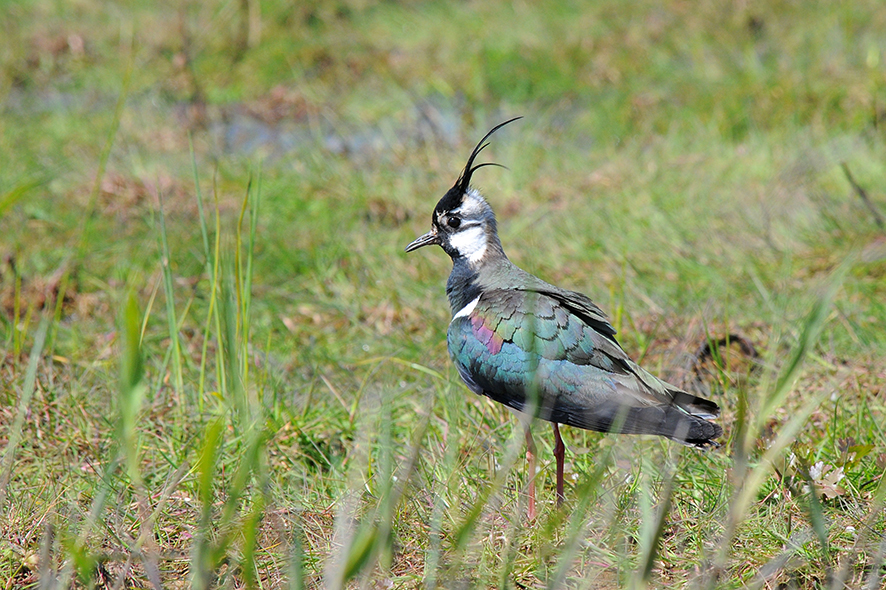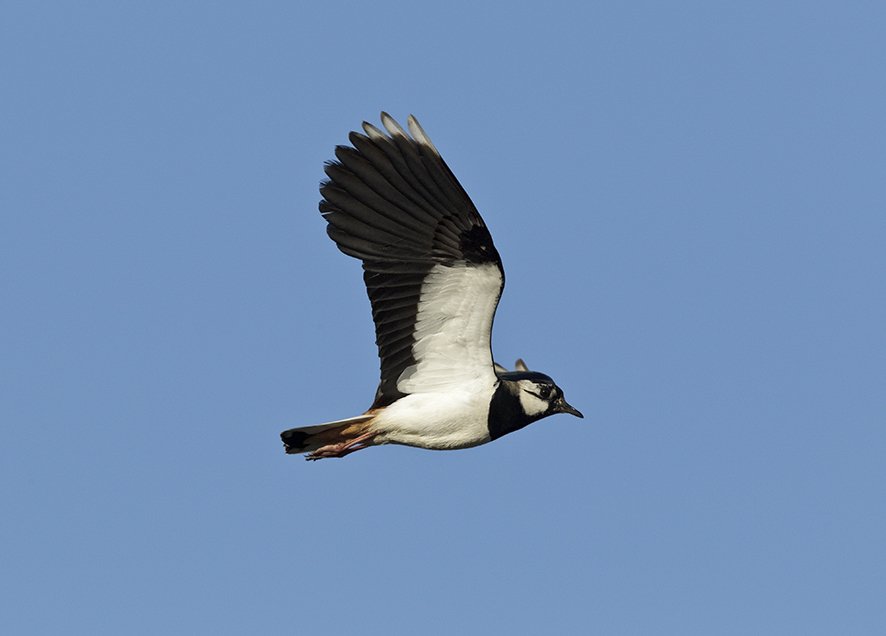Northern lapwing
- The mysterious moon bird
It is an amazing sight to see the northern lapwing’s characteristic acrobatic song flight as it soars over meadows and tidal meadows, where it swoops and turns around in the air. At full moon, it is also active at night, when you can hear its distinctive voice vuii-o-vuiip-tilt-tilt-euvii, which has given the species its Danish name ” Vibe”. Previously, the northern lapwing was one of the most common birds in Denmark, but the stock has more than halved since the 1970s. The decline is primarily due to the more intensive cultivation of meadows and tidal meadows, which reduces the number of plants and small animals in the meadows, and reduces food for the northern lapwings.

Northern lapwing with a broken wing
The northern lapwing lays its eggs in a dip in the ground, and is very vulnerable if hay is harvested in the meadow before the chicks are fledged. The northern lapwing is known for its special ”deflection behaviour”. The adult bird runs around the meadow with hanging wings, so it looks like it has a broken wing. In this way, it is showing that it is easy prey for predators, which lures them away from the nest and the young birds. The Wadden Sea, along with Tipperne and Vejlerne nature reserves are the main areas for northern lapwings.
Facts
The northern lapwing is 30 cm long and has a wingspan of 70-76 cm. It is easily recognised by its metallic green upper side, the broad rounded wings and the characteristic feather top. The northern lapwing feed on insects, worms, frogs and snails and plant parts. The species is widespread throughout Europe except Iceland, and is one of the most numerous wading birds in Denmark and Europe.


